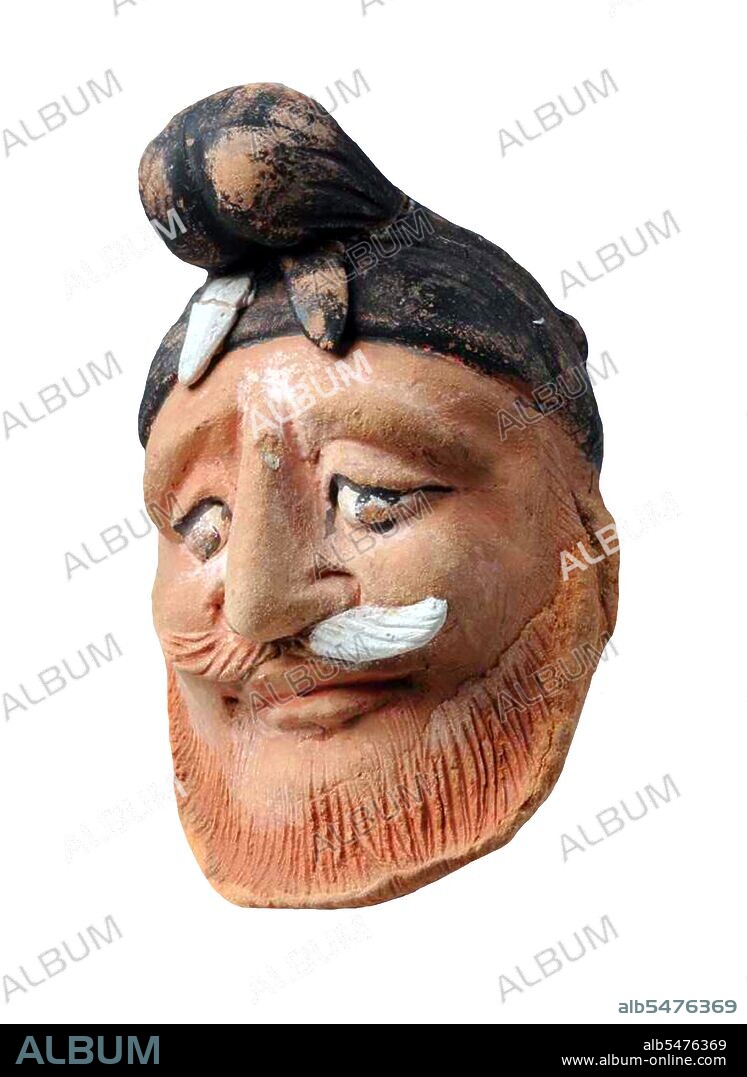alb5476369
China: Ceramic face of a Central Asian from Khotan, Xinjiang,7th-8th century CE

|
Add to another lightbox |
|
Add to another lightbox |



Title:
China: Ceramic face of a Central Asian from Khotan, Xinjiang,7th-8th century CE
Caption:
The Kingdom of Khotan was an ancient Buddhist kingdom that was located on the branch of the Silk Road that ran along the southern edge of the Taklamakan Desert in the Tarim Basin. The name of the kingdom in the region now called Khotan has received many forms. The local people about the third century A. D. wrote Khotana in Kharosthi script; and Hvatäna- in Brahmi in the somewhat later texts, whence as the language developed came Hvamna and Hvam, so that in the latest texts they have Hvam ksira ‘the land of Khotan’. The name became known to the west while the –t- was still unchanged, and as is frequent in early New Persian. But under different influences the local people wrote also Gaustana, when they felt the prestige of Buddhist Sanskrit, and Yuttina, when the prestige of the Chinese kingdom in Sacu was at its height, in the ninth century. To the Tibetans in the seventh and eight centuries the land was Li and the capital city Hu-ten, Hu-den, Hu-then and Yvu-then. The ancient city of Khotan was the kingdom's capital. The Chinese (pinyin) name is Hetian (Chinese: ??). The name Hotan is also used. From the Han Dynasty until at least the Tang Dynasty it was known in Chinese as Yutian. Built on an oasis, its mulberry groves allowed the production and export of silk and silk rugs, in addition to the city's other major products such as its famous nephrite jade and pottery.
Credit:
Album / Pictures From History/Universal Images Group
Releases:
Model: No - Property: No
Rights questions?
Rights questions?
Image size:
3600 x 4932 px | 50.8 MB
Print size:
30.5 x 41.8 cm | 12.0 x 16.4 in (300 dpi)
Keywords:
ART • ARTS • ASIA IMAGE • ASIA PICTURES • ASIA • ASIAN IMAGES • ASIAN PICTURES • ASIAN • CERAMIC • CERAMICS • CHINA • CHINE • CHINESE • EASTERN TURKESTAN • GANDHARA • GANDHARAN • HETIAN • HISTORIA UNIVERSAL • HISTORICAL IMAGES • HISTORICAL PICTURES • HISTORICAL • HISTORY IMAGES • HISTORY PICTURES • HISTORY • KERAMEIKOS • KHOTAN • LEGEND • MELIKAWAT • PORCELAIN • POTTERIES • SILK ROAD • SILK ROUTE • SINKIANG • STONEWARE • TERRA COTTA • TERRACOTA • TERRACOTTA • TURKESTAN • TURKISTAN • XINJIANG • YOTKAN
 Pinterest
Pinterest Twitter
Twitter Facebook
Facebook Copy link
Copy link Email
Email

